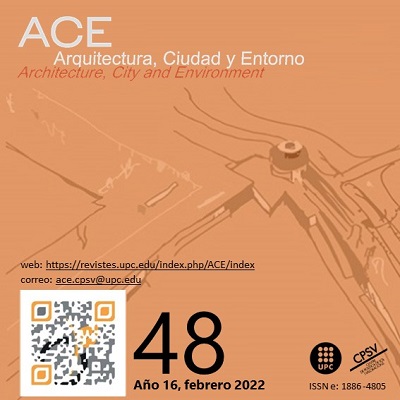From the Sansón Factory to La Fábrica. Ricardo Bofill's Studio House or How to Live in a Ruin
DOI:
https://doi.org/10.5821/ace.16.48.10628Keywords:
Spanish modern architecture, postmodernism, industrial heritage, reconversionAbstract
The project of La Fábrica, Ricardo Bofill's residence and studio, arises from the architect's encounter with the remains of a cement factory under demolition and his desire to preserve it. The industrial facility was located on the outskirts of Barcelona and its production began at the beginning of the 20th century. The complex passed into the architect’s hands in 1970 when he was looking for a site on which he could build Taller de Arquitectura’s proposal for the city in the space that would become what we know today as Walden 7. This article aims to establish a hypothesis about the project process that allowed a factory to be transformed into a domestic space. We will address the different instruments used to carry out this radical change in function - cleaning, delimitation, and redefinition mechanisms - with which Bofill's study manages to inhabit this industrial ruin. In short, it is about putting in value this pioneering project in the reconversion of industrial architecture, from an unconventional vision, linked to the European influences of the time. But also, from their own universe of shapes, textures, and light, in which the architects developed this work as a turning point in the studio's trajectory.
Downloads
Published
Issue
Section
License
| INTELECTUAL PROTECTION CRITERIA |
At this moment, it is count with the "Oficina Española de Patentes y Marcas", while global protection it is being processed by the World Intelectual Property Organization (OMPI/WIPO). Nevertheless the International Standard Serial Number Office (ISSN) has given the following numbers ISSN: 1886-4805 (electronic version) and 1887-7052 (paper version). All articles will be peer reviewed, using double blind reviewing. |
| COPYRIGHT |
The article contents and their comments are authors exclusive liability, and do not reflect necessarily the journal editor commitee's opinion. All ACE published works are subject to the following licence CC BY-NC-ND 3.0 ES http://creativecommons.org/licenses/by-nc-nd/3.0/es/ It implies that authors do not hold nor retain the copyright without restrictions but only those included in the licence. |


































